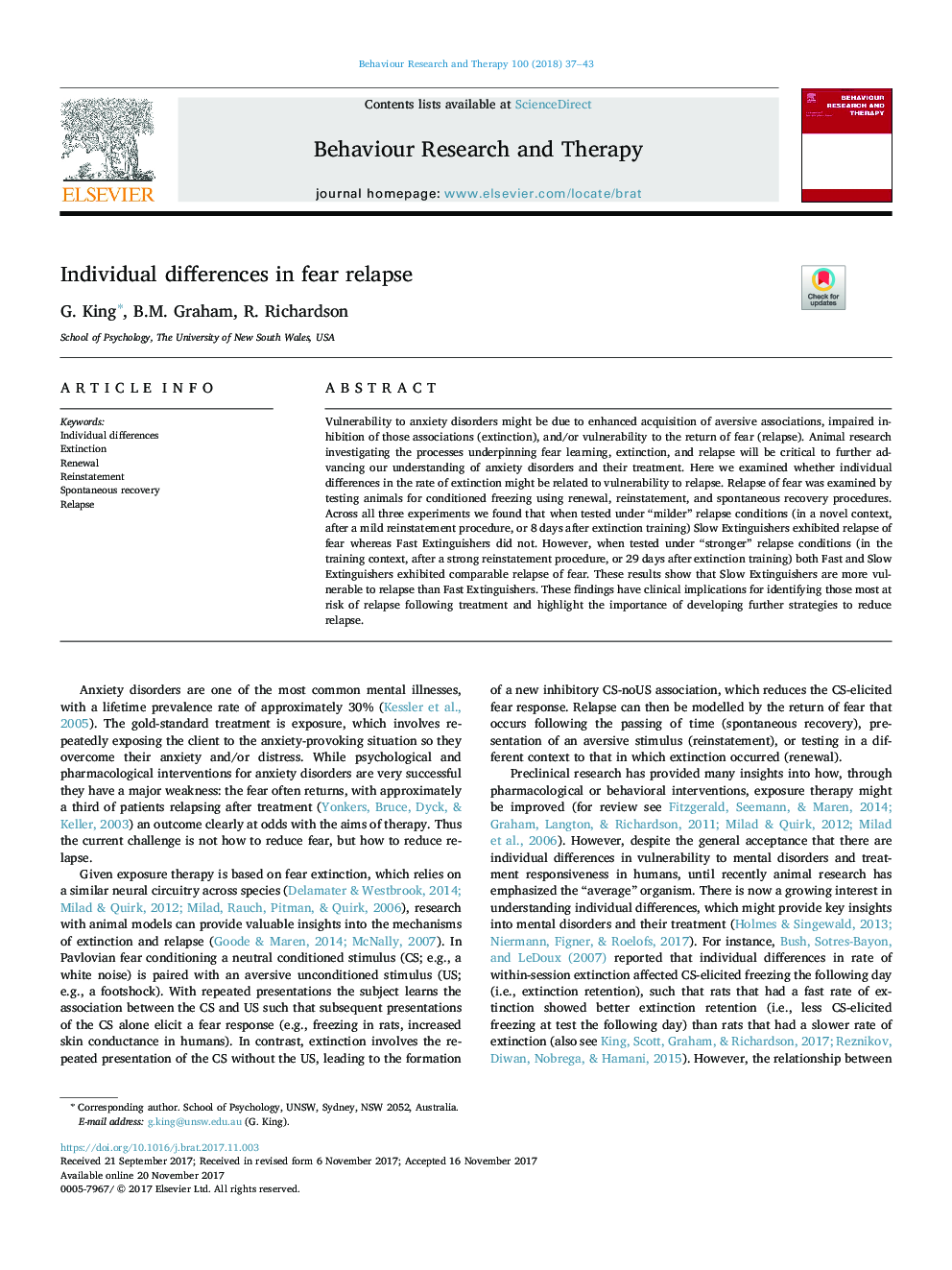| Article ID | Journal | Published Year | Pages | File Type |
|---|---|---|---|---|
| 7261925 | Behaviour Research and Therapy | 2018 | 7 Pages |
Abstract
Vulnerability to anxiety disorders might be due to enhanced acquisition of aversive associations, impaired inhibition of those associations (extinction), and/or vulnerability to the return of fear (relapse). Animal research investigating the processes underpinning fear learning, extinction, and relapse will be critical to further advancing our understanding of anxiety disorders and their treatment. Here we examined whether individual differences in the rate of extinction might be related to vulnerability to relapse. Relapse of fear was examined by testing animals for conditioned freezing using renewal, reinstatement, and spontaneous recovery procedures. Across all three experiments we found that when tested under “milder” relapse conditions (in a novel context, after a mild reinstatement procedure, or 8 days after extinction training) Slow Extinguishers exhibited relapse of fear whereas Fast Extinguishers did not. However, when tested under “stronger” relapse conditions (in the training context, after a strong reinstatement procedure, or 29 days after extinction training) both Fast and Slow Extinguishers exhibited comparable relapse of fear. These results show that Slow Extinguishers are more vulnerable to relapse than Fast Extinguishers. These findings have clinical implications for identifying those most at risk of relapse following treatment and highlight the importance of developing further strategies to reduce relapse.
Related Topics
Health Sciences
Medicine and Dentistry
Psychiatry and Mental Health
Authors
G. King, B.M. Graham, R. Richardson,
